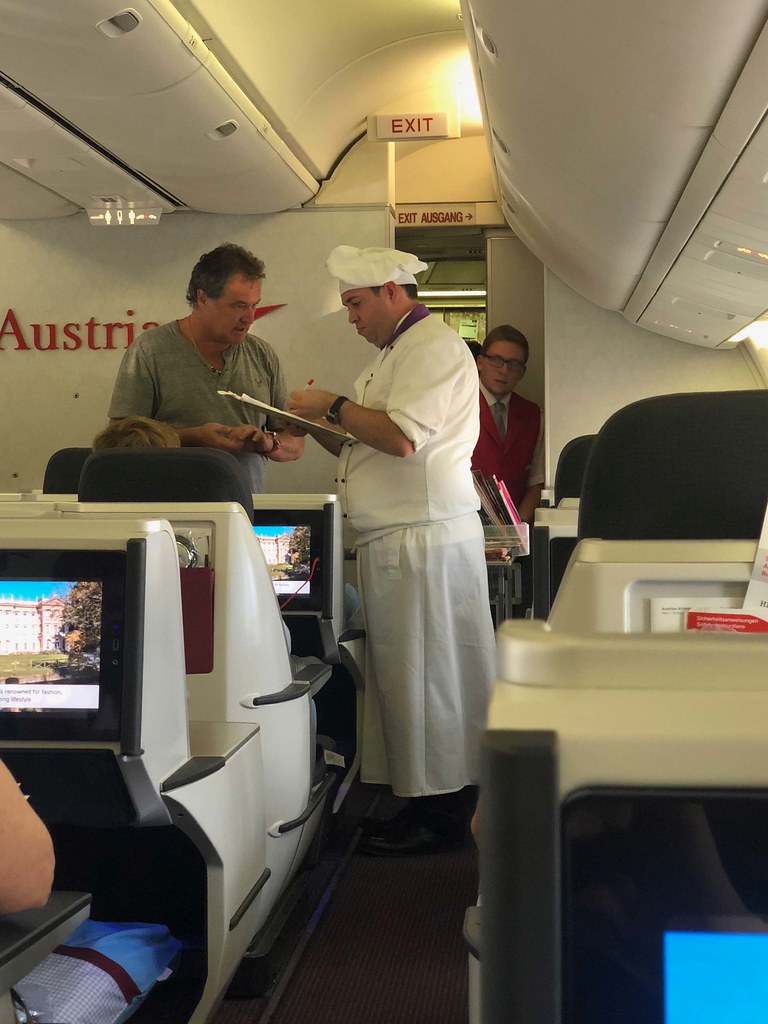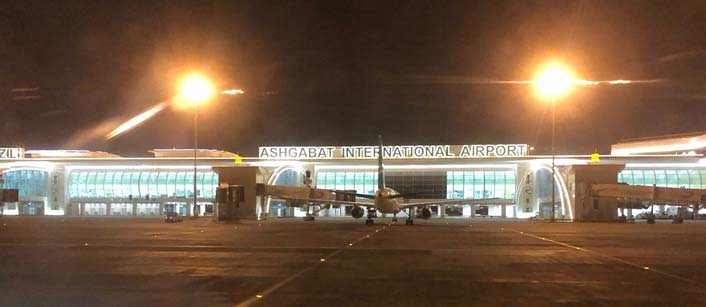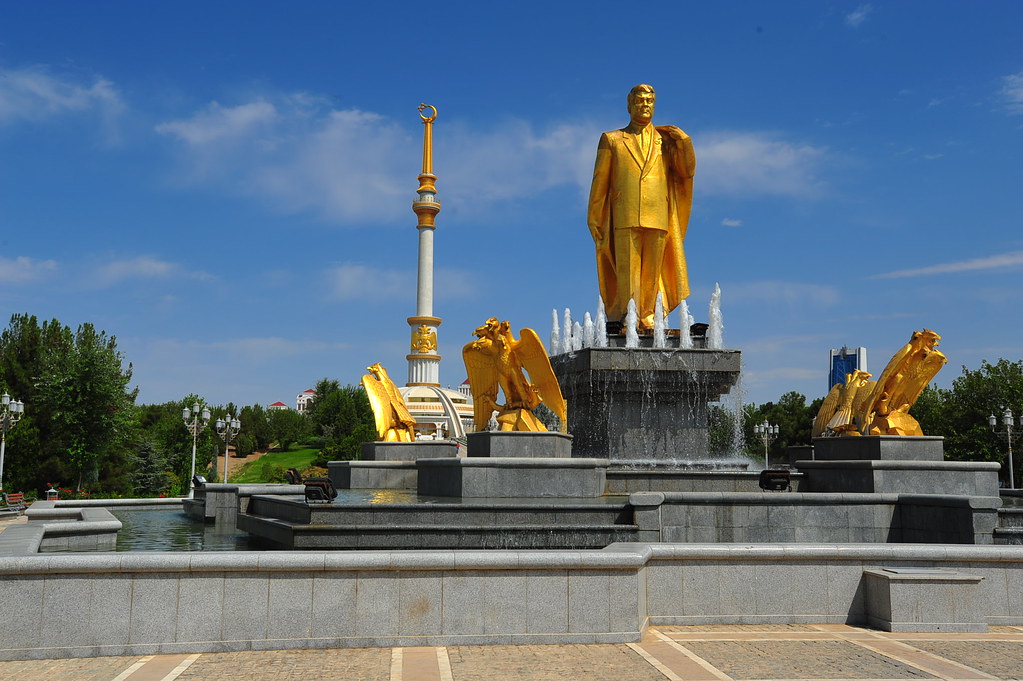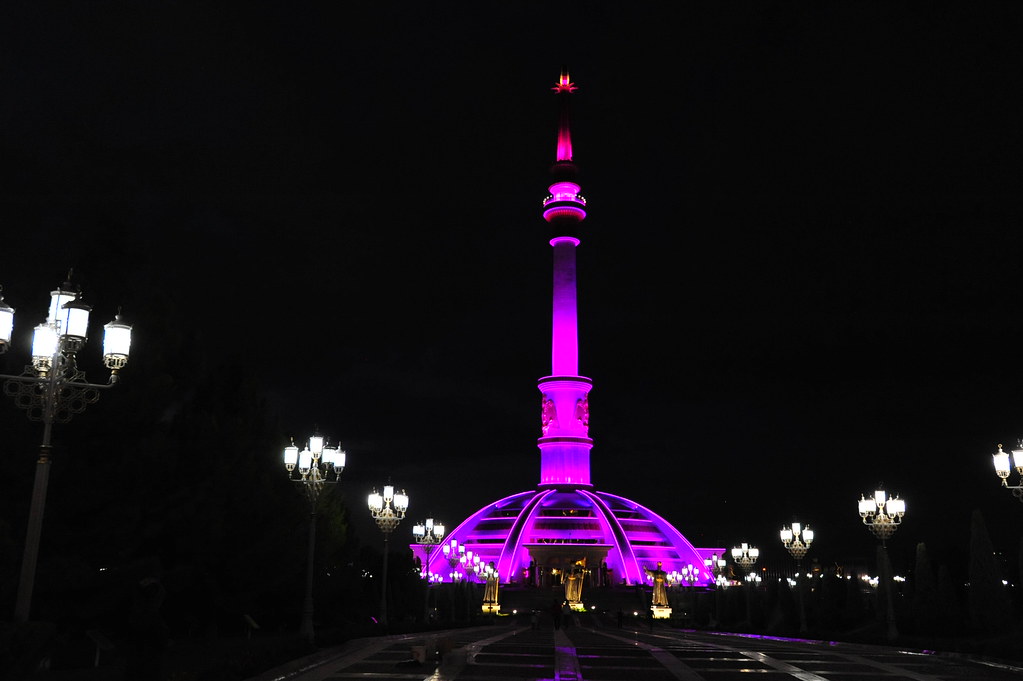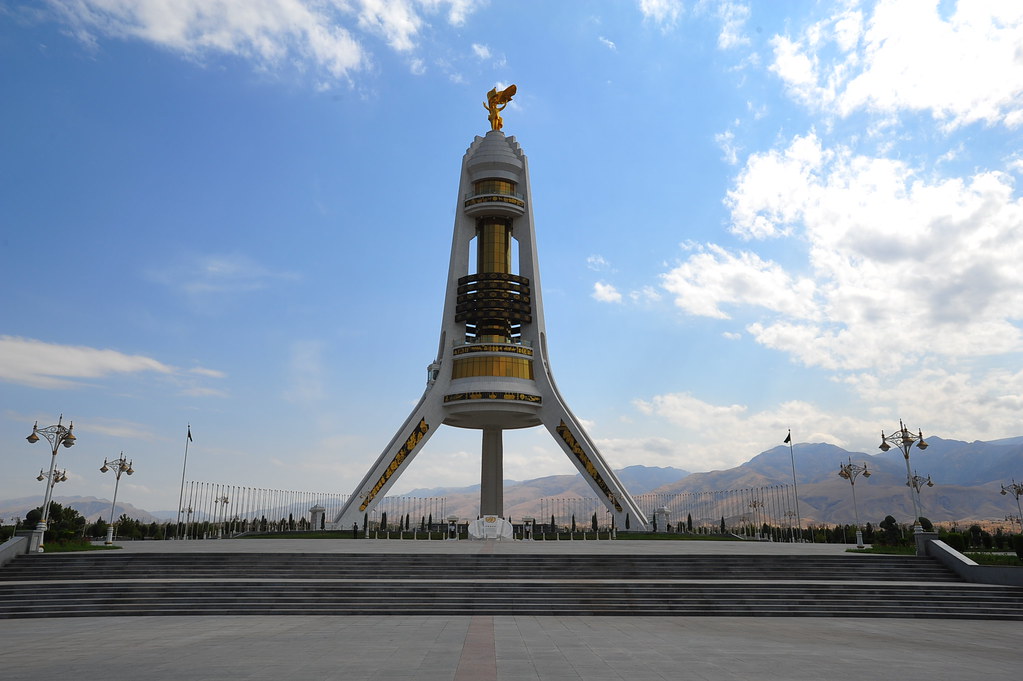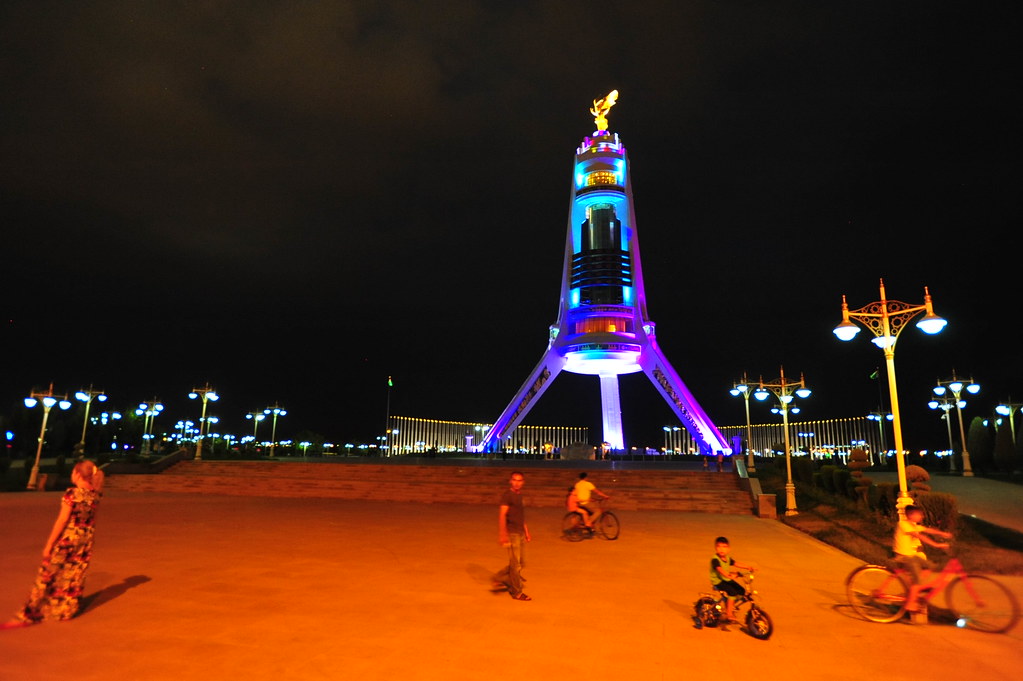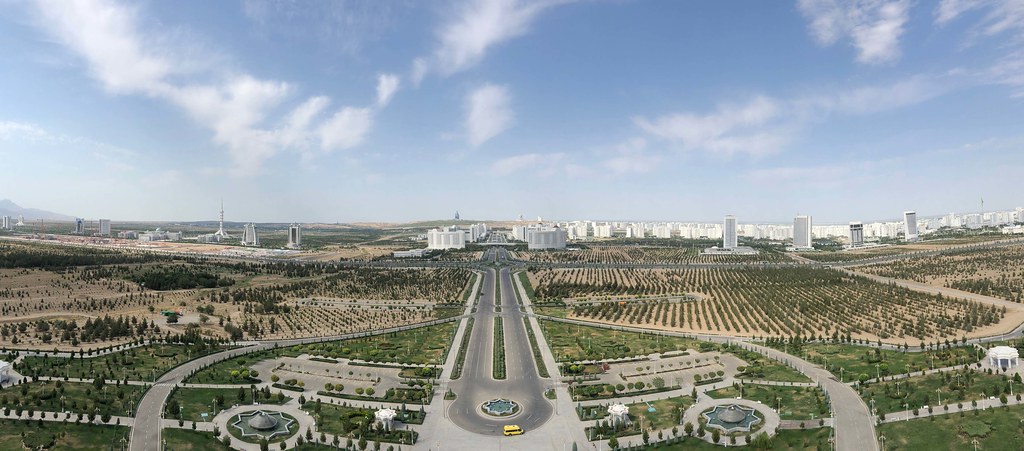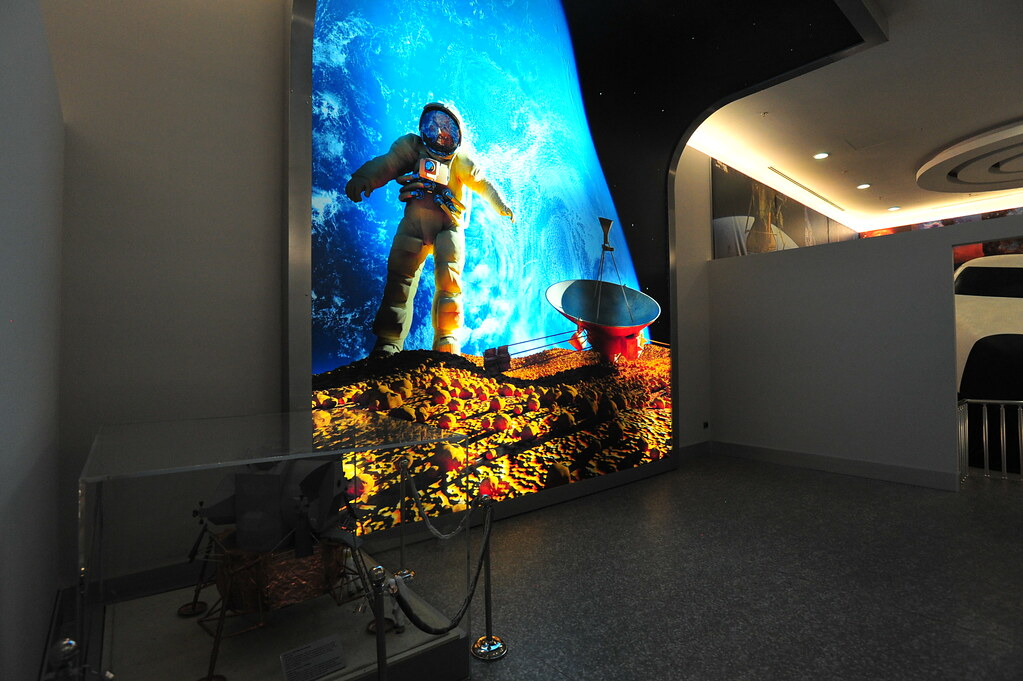How do I begin? When people ask what I found to be the most fascinating countries in the world, my usual reply would always have been “North Korea and Myanmar.”
5 hours in Ashgabat was enough to shoot Turkmenistan to the very top.
Known as “North Korea but without all the press,” Turkmenistan was similarly ruled by a “President for Life” Saparmurat Niyazov (also known as Turkmenbashi) until his death in 2006. Little changed under current President Gurbanguly Berdimuhamedow when he was “elected” president in 2007; according to Human Rights Watch, “Turkmenistan remains one of the world’s most repressive countries. The country is virtually closed to independent scrutiny, media and religious freedoms are subject to draconian restrictions, and human rights defenders and other activists face the constant threat of government reprisal.”
Furthermore, according to Reporters Without Borders’ 2014 World Press Freedom Index, Turkmenistan has the 3rd worst press freedom conditions in the world, just before North Korea and Eritrea. In its campaign to remain closed off to the rest of the world, Turkmenistan has also taken a neutral position on almost all international issues and remains to be the only country with a declaration of “permanent neutrality” that has been formally recognized by the United Nations in 1995.
With a reported 1 in 3 people being an informant for the government, it nevertheless boasts the irony of also being the safest and most crime-free countries in the world for tourists. With presidents who have embraced cult-of–personalities as Renaissance Men, Turkmenistan also enjoys for having the Guinness Book Of World Records title for having the most Guinness Book Of World Records. I’ll leave that there.
It would be no surprise I would have had a difficult time given the nature of what I do — I’ve been meaning to visit Turkmenistan for the past 4 years, always being banned from entering for various reasons. The first time was the entire country deciding to shut down its borders to tourism when I first made a serious attempt 4 years ago with a group of 20 people, then it was the “traitorous” nature of being an Asian American (The nationalistic Turkmen people abhor the idea of immigrating outside your home country, let alone “hyphenated identities”), and finally, simply for writing a very “popular” blog (as I was informed) that could influence others in a negative way about their country.
But when I got a last minute notification that they would finally approve my visa, I dropped everything to go as a guest of my partners and once co-leaders Ben and Eilidh of Young Pioneer Tours Central Asia.
With only 2 weeks before I was due to be there, I snagged 3 free business/first class flights on United.com with only 70,000 miles from NYC to Ashgabat via an Austrian Airlines flight to Vienna, a Turkish Airlines flight to Istanbul, and finally a Turkish Airlines flight to Ashgabat.
And so departing on August 18 at 5pm in the evening on an 8 hour flight, I begin with the highly regarded hospitality of Austrian Airlines business class. They’re known for their sexy thick blankets where you can purchase them from the airline; proceeds go to charity.
The free amenities come in a simple rump sack that I now have been using as a laundry bag:
Standard amenities kit otherwise: sleeping mask, socks, lip balm, ear plugs, with a single use toothbrush and toothpaste.
What Austrian Airlines is known for, however, is having some of the best airline food in the industry:
There’s even an onboard chef to take down your orders and food preferences!
We landed the next day in Vienna at 8am local time, where I had an 6 hour layover to once again meet up with my friend Daniela for a wonderful brunch outdoors at Tian Bistro. This is turning out to be our 3 month tradition!
I then flew 2 hours onwards to Istanbul, arriving at 5:30pm the afternoon and returning to one of the world’s best business class lounges for a 2 hour layover. I had profiled the experience more thoroughly when I was there last year.
Finally I boarded my 3.5 hour flight from Istanbul to Ashgabat.
We departed at 8:20pm and arriving at 1:55am local time to an airport that belonged in the future.
Like Oman, I was immediately taken aback on how beautiful their airport was.
Make sure you have your visa permit printed out beforehand and rush to the front of the line if you can as it’ll make things much easier.
You first make a stop on the right on the visa office, who will then take your passport for processing and direct you to the bank kiosk next door where you’ll then pay for your visa on arrival ($88 USD and they do accept credit cards…you just have to be very insistent)
Then you go back to the visa office with the proof of payment and then they’ll give back your passport with your new visa inside.
Afterwards you head up towards an electronic kiosk to have your pictures taken and your fingerprints processed.
Finally, you go up to one final kiosk to be let inside the country.
And after 4 years of being banned, it’s an amazing feeling to finally be let in!
The rest of the airport is pretty standard, with an escalator heading down to baggage claims right before heading out into arrivals where our drivers were waiting for us.
After waiting for the others to arrive from the same flight, we were then driven 7 minutes away to our accommodations at Ak Altyn Hotel. We crashed soon afterwards at 3am.
With a 9am wakeup call (I woke up at 6am and had a hard time sleeping afterwards for some reason), Ben got us on our yellow submarine bus and we began our tour of Ashgabat.
This is truly an empty city of monuments and you can do all of them in any particular order; there’s hardly any traffic, pedestrians, or simply any people to bother you. It paints a bizarre atmosphere, and extremely surreal how it felt to have the entire city to yourself.
Despite a population of 650,000 people, it felt like we were exploring a whitewashed evacuated Las Vegas of a dystopian post-apocalyptic future. I’ll juxtapose some of the memorials with how they light up at night to give a sense on how different the city becomes — therefore another tour by night is warranted.
Here’s a list of what to see —
Halk Hakydasy Memorial Complex featuring 3 monuments: one to those killed in the Battle of Geok Tepe during World War II, another to the victims of the 1948 earthquake, and a third to commemorate those who fought other battles for the Motherland (Turkmenistan):
The ancient city of Nissa (also known as Parthaunisa), 18 km southwest of Ashgabat, is described by some as one of the first capitals of the Parthians:
The Russian Bazaar:
Lunch in a yurt at a restaurant called Merdem:
Independence Monument:
Memorial To The Ruhnama.
The Ruhnama is a book of poems, ideologies, philosophies, stories, and revisionist history written by the first President of Turkmenistan that was meant to be the “spiritual guide of the nation” and the basis of the nation’s arts and literature and the “centre” of the Turkmen people.
The Arch of Neutrality:
Take the elevator for 3 manats to get these rooftop views!
The Monument To The Constitution:
There’s an elevated platform on this memorial to get these views down the city:
If the front door is open like it was for us, sneak up to the rooftop if you can!
Wheel of Enlightenment – an indoor theme park known for hosting the “largest enclosed ferris wheel in the world.” Except for one ecstatic kid running around, we were the only people here.
Snoop around and you’ll find an unused food court on the 2nd floor…
…and an abandoned space museum and bowling alley in the basement.
They city becomes even more likes Las Vegas at nighttime:
Then we had dinner at the country’s swankiest Ylydyz Hotel. They’re known for their huge golf course that Turkmenistan is using to practice for the Olympics.
They also have a rooftop that gives you an idea of this bizarro world:
If that’s not enough for you, set off in the morning for Kipchak and the Turkmenbashy Mosque.
Built by the country’s first president, its existence as a mosque is controversial for featuring passages from his book the Ruhmana instead of the Qu’ran. Thus they were briefly shunned by the likes of Saudi Arabia and Dubai for this wayward interpretation of Islam, and much to possibly poetic justice, the mosque’s dome is now cracking on all sides, as the land upon which it was built is slowly sinking into the underground parking lot that he built below.
Next door is his Mausoleum where he and his family are currently buried. Crediting to a sense of ominous luck, it was built 2 years right before his death from a heart attack.
You’ll need a drink after a few days here, so prepare yourself.
![]()
- At time of posting in Ashgabat, it was 27 °C - Humidity: 31% | Wind Speed: 11km/hr | Cloud Cover: partly cloudy








